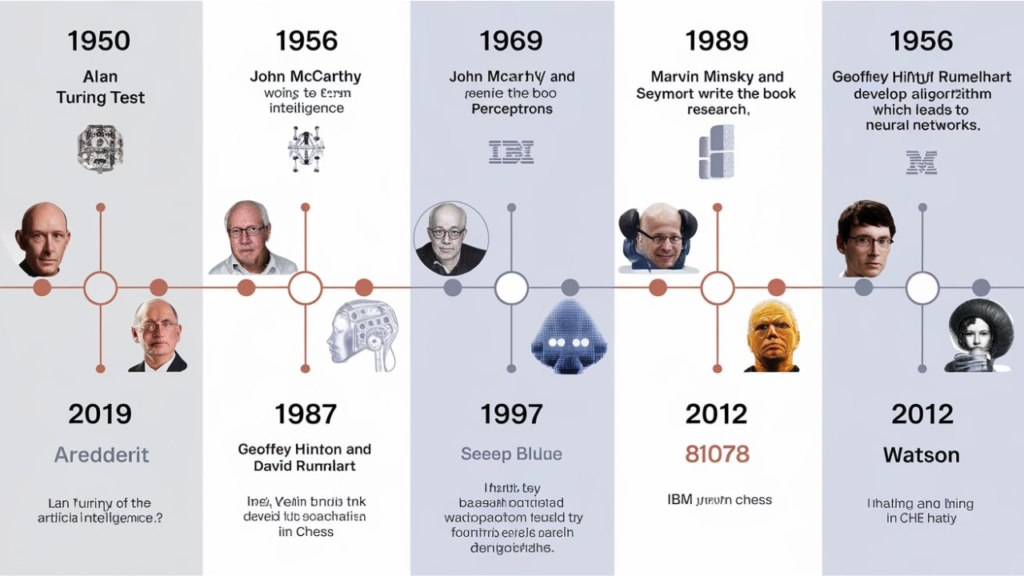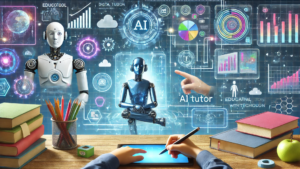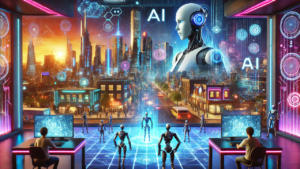History of Artificial Intelligence: Founders and Key Milestones

Artificial Intelligence (AI) is transforming industries, driving innovation, and shaping the future of technology. However, to understand how AI reached its current heights, it’s essential to look back at its origins and trace the milestones that have led to its rise.
In this article, we’ll dive into the early beginnings of AI, explore the pioneers who laid the foundation, and discuss its evolving path. For a deeper insight into AI and its current advancements, you can explore AI and tech news at Aarvicor.
Who Founded Artificial Intelligence?
Artificial Intelligence, as we know it today, owes much of its foundation to the work of mathematicians, logicians, and computer scientists. The idea of creating machines that mimic human intelligence dates back centuries, but the field truly began to take shape in the mid-20th century.
Alan Turing – The Father of AI
One of the most influential figures in AI’s history is Alan Turing. A British mathematician and cryptanalyst, Turing is often called the father of AI. His groundbreaking paper, Computing Machinery and Intelligence (1950), posed the famous question: “Can machines think?” He proposed the Turing Test, a method to measure a machine’s ability to exhibit intelligent behavior indistinguishable from that of a human.
Turing’s work laid the philosophical and technical groundwork for AI. His ideas suggested that computers, given the right algorithms, could replicate human thought processes. The test is still relevant today, used to gauge the intelligence of modern AI systems.
John McCarthy – The Term “Artificial Intelligence”
While Turing introduced the concept, it was John McCarthy, an American computer scientist, who coined the term Artificial Intelligence in 1956. McCarthy organized the Dartmouth Conference, widely recognized as the birth of AI as an academic field. The conference brought together experts in mathematics, engineering, and cognitive science to explore how machines could simulate intelligence.
McCarthy’s contributions did not stop at naming AI. He developed the LISP programming language, which became the standard for AI research during the 1960s and 1970s. His vision of AI involved the creation of machines capable of learning and reasoning autonomously.
Other Key Pioneers in AI
Several other notable figures played pivotal roles in shaping AI:
- Marvin Minsky: Often referred to as one of the founding fathers of AI, Minsky co-founded the MIT Artificial Intelligence Laboratory and worked on various aspects of machine learning and robotics.
- Herbert A. Simon: A Nobel laureate in economics, Simon was a key figure in developing early AI programs such as the Logic Theorist and General Problem Solver. These programs attempted to simulate human problem-solving.
- Claude Shannon: Known as the father of information theory, Shannon’s work on symbolic logic and digital circuits was fundamental to AI’s early development.
The Evolution of AI: Key Milestones
Since its inception, AI has gone through several transformative phases, from conceptual frameworks to practical applications. The following are some of the significant stages in AI’s development:
1. Early AI Programs (1950s–1970s)
The 1950s and 1960s were characterized by the development of early AI programs. Researchers focused on solving problems in mathematics and logic using rule-based systems. One such example is the Logic Theorist, developed by Allen Newell and Herbert Simon. It was designed to mimic human problem-solving processes.
Another significant breakthrough came with ELIZA, created by Joseph Weizenbaum in the 1960s. ELIZA was an early natural language processing program that could engage in basic conversations. It laid the groundwork for modern-day chatbots and conversational AI.
2. AI Winter (1970s–1980s)
Despite the early successes, the limitations of AI systems soon became apparent. These programs lacked the ability to learn from experience or apply knowledge to complex real-world situations. This led to a period known as the AI Winter, where funding and interest in AI research declined.
However, this period of stagnation was temporary, as the foundational work done during this time paved the way for future developments.
3. The Rise of Machine Learning (1990s–2000s)
The 1990s marked a turning point for AI, driven by advances in machine learning. Researchers shifted focus from rule-based systems to models that could learn from data. Machine learning algorithms, particularly neural networks, gained prominence.
The rise of computational power, coupled with access to large datasets, enabled AI to make significant progress. In 1997, IBM’s Deep Blue made history by defeating world chess champion Garry Kasparov, showcasing AI’s potential in strategic decision-making.
4. The Age of Deep Learning and Big Data (2010s–Present)
The most recent wave of AI development has been fueled by deep learning. This subset of machine learning leverages multi-layered neural networks to process vast amounts of data, allowing machines to excel in tasks such as image recognition, language processing, and game playing.
Google’s AlphaGo, developed by DeepMind, defeated world champion Go player Lee Sedol in 2016. This victory highlighted AI’s capacity to handle complex, abstract tasks once thought to be the exclusive domain of human intelligence.
AI is now deeply integrated into everyday technologies, from virtual assistants like Siri and Alexa to advanced algorithms in finance, healthcare, and autonomous vehicles.
The Future of AI: Where Are We Headed?
As AI continues to evolve, its potential applications seem limitless. From improving decision-making processes in businesses to revolutionizing personalized medicine, AI’s future looks bright. However, challenges remain, particularly regarding ethical considerations, data privacy, and bias in AI systems.
For an in-depth look at the future of AI and its current trends, visit Aarvicor’s AI and tech insights, where you can stay updated on the latest innovations in artificial intelligence.
Conclusion
Artificial Intelligence has come a long way since its conceptual birth in the mid-20th century. Thanks to the pioneering efforts of visionaries like Alan Turing and John McCarthy, AI has evolved into a powerful tool that continues to transform industries. As AI’s potential continues to unfold, understanding its origins and evolution helps us appreciate the groundbreaking work that laid the foundation for its future.
Here are some useful resources and outbound links that provide further insights into the history of Artificial Intelligence and its evolution:
- Alan Turing and the Turing Test
Learn more about Alan Turing’s contribution to AI and the Turing Test in this comprehensive article from the BBC:
https://www.bbc.co.uk/history/historic_figures/turing_alan.shtml - John McCarthy and the Dartmouth Conference
A detailed overview of John McCarthy’s role in coining the term “Artificial Intelligence” and the Dartmouth Conference:
https://plato.stanford.edu/entries/artificial-intelligence/ - Early AI Milestones
Explore early AI programs and the journey from the Logic Theorist to IBM’s Deep Blue with this resource from MIT:
https://www.csail.mit.edu/research/artificial-intelligence - Deep Learning and AlphaGo
Dive into how DeepMind’s AlphaGo revolutionized AI and machine learning strategies, via DeepMind’s official blog:
https://www.deepmind.com/research/highlighted-research/alphago
For more news, updates, and expert reviews on AI technology, be sure to check out Aarvicor.
#HistoryofArtificialIntelligence #AIfounders #AlanTuringAIcontributions #JohnMcCarthyAI #EvolutionofAI #AImilestones #DevelopmentofArtificialIntelligence #AIpioneers #TuringTesthistory #DartmouthConferenceAI #Machinelearninghistory #Riseof deeplearning






